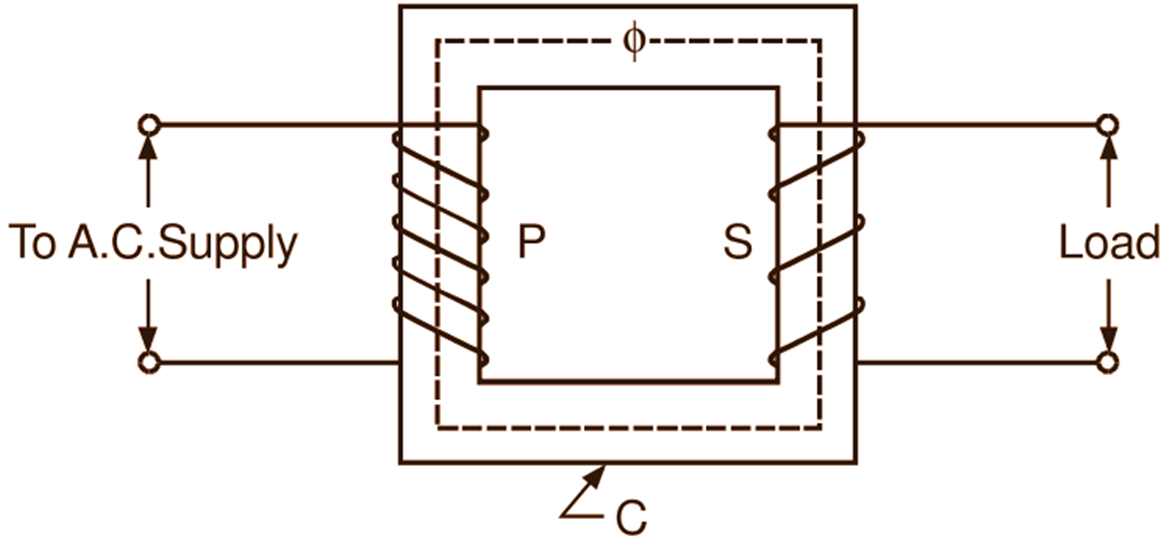In this topic, you study Working Principle of Transformer.
The operation of the transformer is based on the principle of mutual induction between two circuits linked by a common magnetic field. To understand the working of the transformer more clearly, consider the transformer in its elementary form shown in Fig. 1.

Fig. 1: Elementary transformer
It essentially consists of two windings (P and S), electrically separate but wound on a common laminated steel core (C). The vertical portions of the core on which these windings are placed are referred to as the limbs and the top and bottom portions are the yokes. The winding (P) which is connected to the existing supply system and which receives energy from it is known as the primary winding. The other winding (S) delivering energy to the load at the desired voltage is called the secondary winding.
When the primary winding is connected to ac supply, applied alternating voltage circulates an alternating current through it. This current flowing through the primary winding produces an alternating flux (Φ)). Most of this varying flux links with the secondary winding through the iron core and induces an e.m.f. in it in accordance with Faraday’s law of electromagnetic induction.
“Faraday's Law of Electromagnetic Induction: The law states that whenever the number of lines of force linking with a circuit changes, an e.m.f. is always induced in iL The magnitude of this induced e.m.f: is proportional to the rate of change of flux linkages”.
This phenomenon due to which an alternating current in the primary winding produces an e.m.f. in the secondary winding is known as mutual induction and the e.m.f. induced in the secondary winding is known as mutually induced e.m.f. or an of mutual induction. The frequency of this e.m.f. is the same as that of the supply voltage.
If now the secondary circuit is closed through the load, the mutually induced e.m.f. in the secondary winding circulates current through the load. Thus, the energy is transferred, entirely magnetically through the core from the primary circuit to the secondary circuit. It should be noted that the transformer action is not possible with direct current of constant magnitude, as the flux produced by it will not be alternating, but will be of a constant value. Therefore, mutual induction between the primary and secondary windings will not be possible. In fact, if the single phase transformer is connected to dc. supply of rated voltage, the resistance of the primary winding being small, it will draw a very large amount of current from the supply. This excessive current may damage the transformer. With ac, it is the e.m.f: of self-induction in the primary winding which mainly limits the current by opposing the applied voltage.